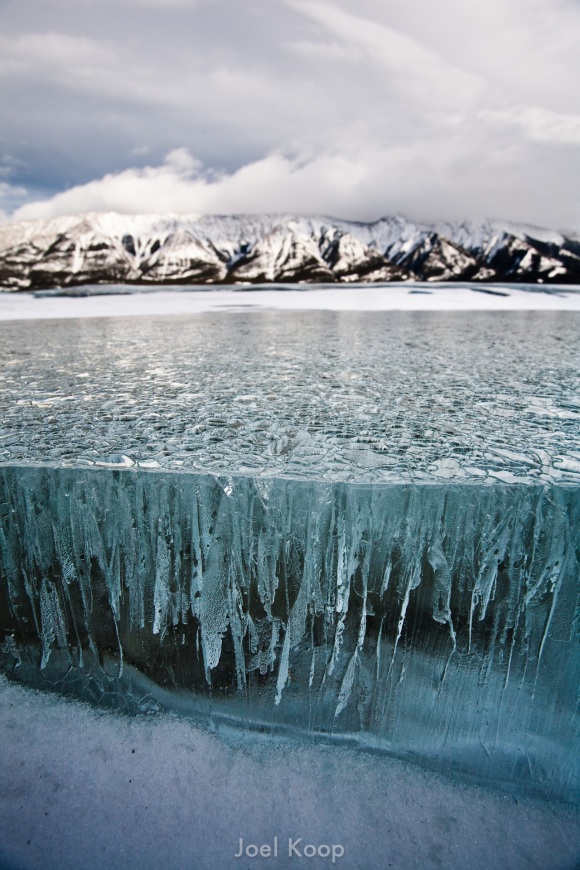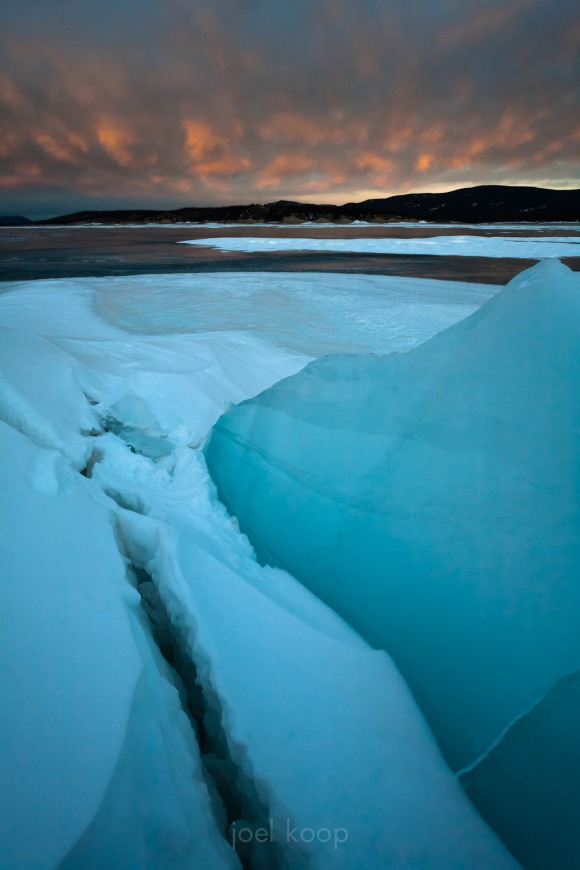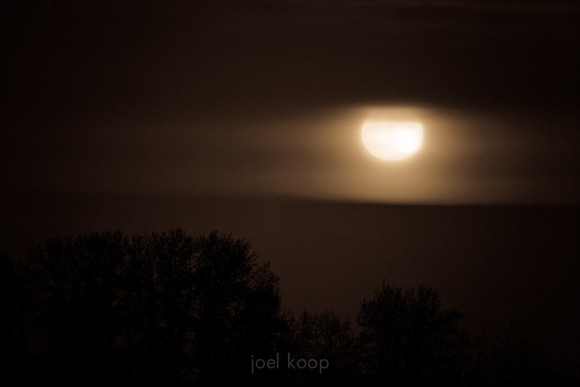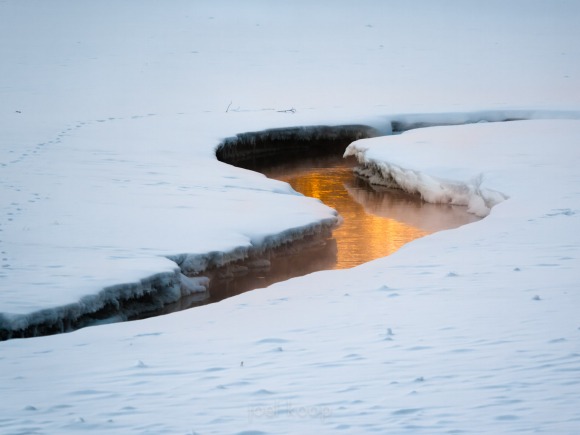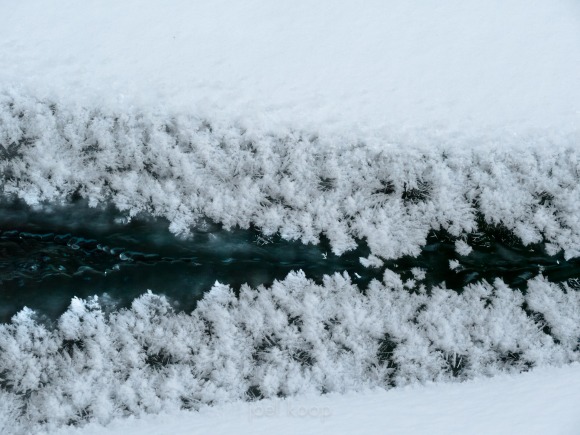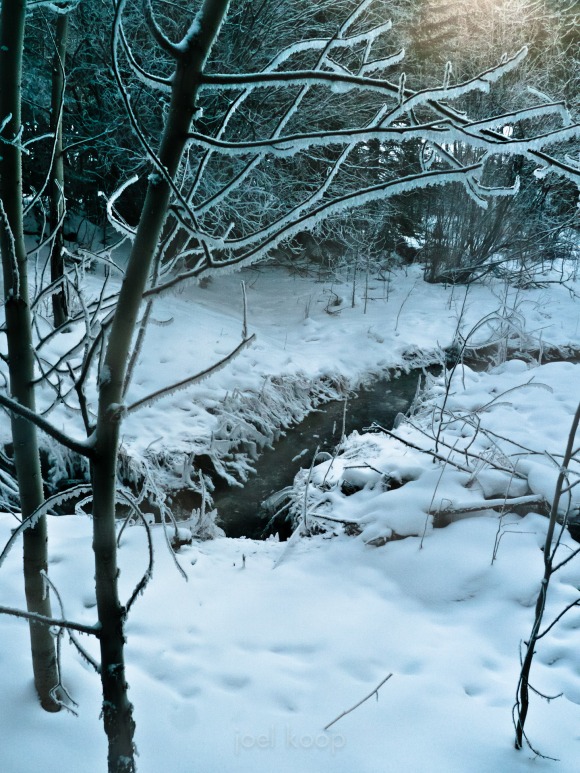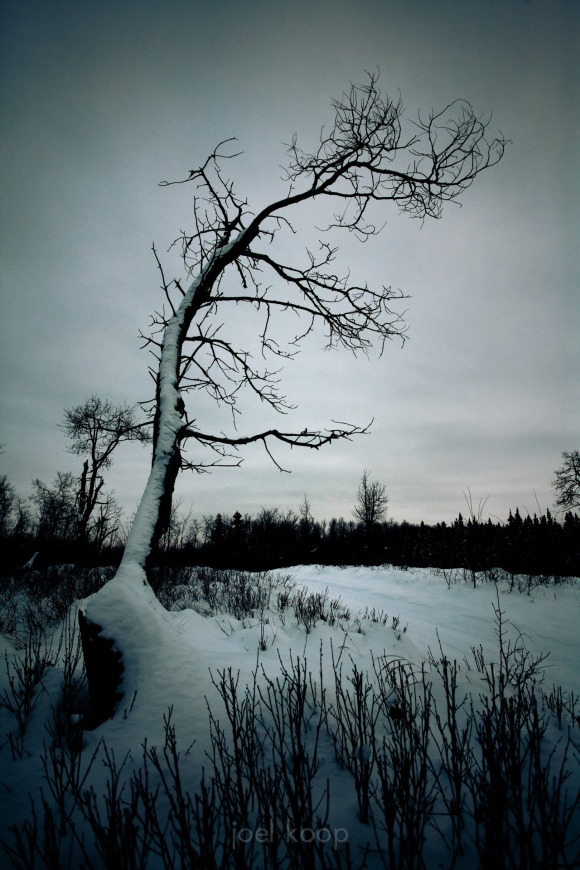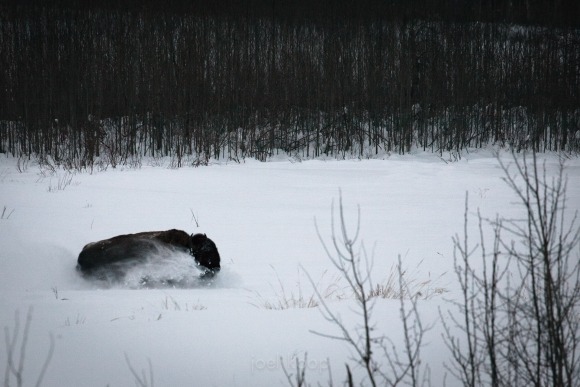A cross-section of ice at Preacher’s Point on Abraham Lake.
Tripods on Ice
Tripods are extremely important for landscape photographers, and I have a couple good tripods that I’ve collected over the years – not my dream tripod yet, but close. I’ve heard of people at the camera store asking for spikes in the feet of their tripods, and always thought it might be a little perk but didn’t really matter. After all, in years of taking photos all over the place, I’ve never really missed having spikes on the feet of my tripods – rubber feet have always worked great.
Well, this week it all changed. Out on the icy surface of Abraham Lake, with the wind blowing constantly and extremely hard, my tripod was useless. In fact, it made everything less steady – it provided more surface area for the wind to catch. The rubber feet had no grip at all on the ice. If I let go of my tripod on the ice, it would start to move away from me as the wind pushed it across the ice. Luckily it never fell over. The best I could do was to hang on to it, put a bunch of my weight on it, and hope no super large gusts came up during the exposure (the gusts were blowing me around a bit too, despite my crampons).
So I now understand the desire for spiked tripod feet, although I’m still not sure how much they would have helped in this case. I think my conclusion is just that it is extremely hard to take long exposures on ice in extremely windy conditions.
I’m not finished going through my photos from Abraham Lake yet, but here’s a preview. This is from Wednesday morning.
On Being Prepared and the Full Moon
I feel a little guilty about today’s photo. First of all, it’s late, but secondly (and more importantly) it caught me by surprise. I should have known that there would be a full moon. I even have a little iphone app that tells me all the moonrise times and locations (as well as sunrise, sunset, and all about stars and constellations—it’s called “Planets”). But perseverance and awareness of my surroundings saved me this time, and just as it was getting too dark to see, a huge orange moon peeked over the horizon. If you’ve ever watched a moon rise, you know it happens very fast.
I got to a clear spot where I could see more moon than tree branches a few minutes after it rose. It was just starting to disappear behind a bank of clouds. I had to set my camera to mirror-lockup (so my camera doesn’t shake) plug in my remote (so I don’t bump the camera when I press the shutter button), and set up the tripod pretty quickly to get this shot. I like the way the clouds diffuse the light, making it a little different than the average clear-sky moon shot.
The full moon as it rose behind a bank of clouds last week.
Glowing Channel Through Snow
Thick Frost on Spruce Boughs
For the next couple of days I’ll be finding some new photos in the mountains. I’m pretty excited – I got some new crampons with a MEC giftcard I got from Uncle Jack for Christmas, so I should be coming back with ice photos of one sort or another. I’ve never used crampons before, and I don’t have an ice axe, so don’t expect anything too extreme, but I’m slowly expanding the places I can get to and photograph.
I’ve scheduled this to post automatically for today, and another for tomorrow, so for those of you who look forward to your daily fix – never fear.
Frost on spruce branches by Cave and Basin in Banff.
Frost Spikes on River Ice
Frost Beside Flowing Water
Frosted Aspen Beside Stream
How I Love Creepy Trees
Taken on the Hayburger trail in Elk Island National Park while standing in snow above my waist. It was powdery snow, but still – hard to move. Makes me wonder how the animals survive the winter. It must take an incredible amount of energy to move anywhere at all, and food looks like it would be pretty scarce.
Disappearing Bison
(For full effect, please read in the voice of David Attenborough)
In the plains and woodlands of central Alberta, a most curious animal dwells. This animal swims through frozen water, easily powering its impressive bulk forward. At over 1 metric ton, it is ironically scared of most other animals, preferring either to be alone or to be in groups of its own kind. Behold the bisonshark. While almost impossible to detect when submerged, the bisonshark rises from the snow to move more quickly.
Taken yesterday in Elk Island National Park. The bison were only sometimes completely submerged, usually showing most of their top half. But yes, we do have a LOT of snow.
